Doors serve important functional and aesthetic roles in any home. Selecting the right exterior and interior doors for your living spaces involves weighing factors like durability, insulation, price, and visual appeal. This article will provide an overview of different common residential door types along with their distinguishing qualities, pros and cons, and suitable placement options.
Post your Requirement
19 Different Types of Doors : Pros and Cons
- Glass Doors
- Panel Doors
- Steel Doors
- PVC Doors
- Timber Doors
- French Doors
- Flush Doors
- Sliding Doors
- Aluminum Doors
- Collapsible Doors
- Dutch Doors
- Battend Doors
- Exterior Doors
- Fiberglass Doors
- Barn Doors
- Bypass Doors
- Pivot Doors
- Double Doors
- Composite Doors
1. Glass Doors:
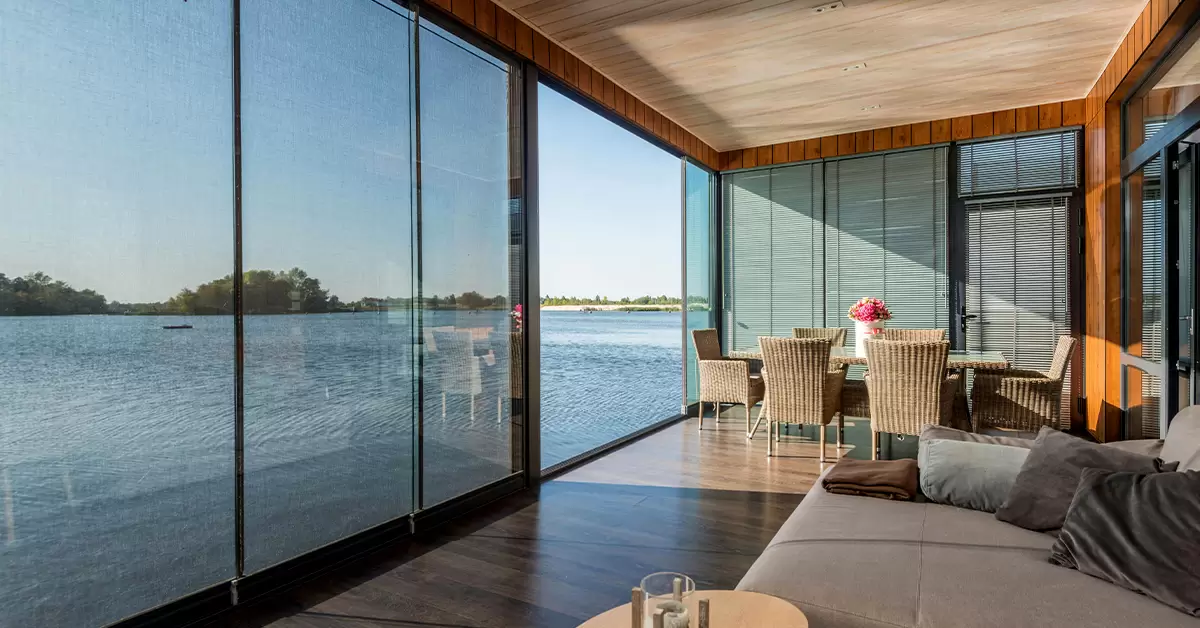
Glass doors feature large paned or semi-opaque panels set in wood, metal, or fiberglass frames. Popular versions include:
- French glass doors – Timeless styling with large glass panes surrounded by muntins and rails. Provide outside access where views are important.
- Pocket glass doors – Slide into cavities recessed in walls to conserve space when open. Create an airy, modern feeling.
Its pros and cons are stated below:
- Pros: Brighten rooms, enhance views, impress guests.
- Cons: Less privacy, more fragile than solid doors.
2. Panel Doors:
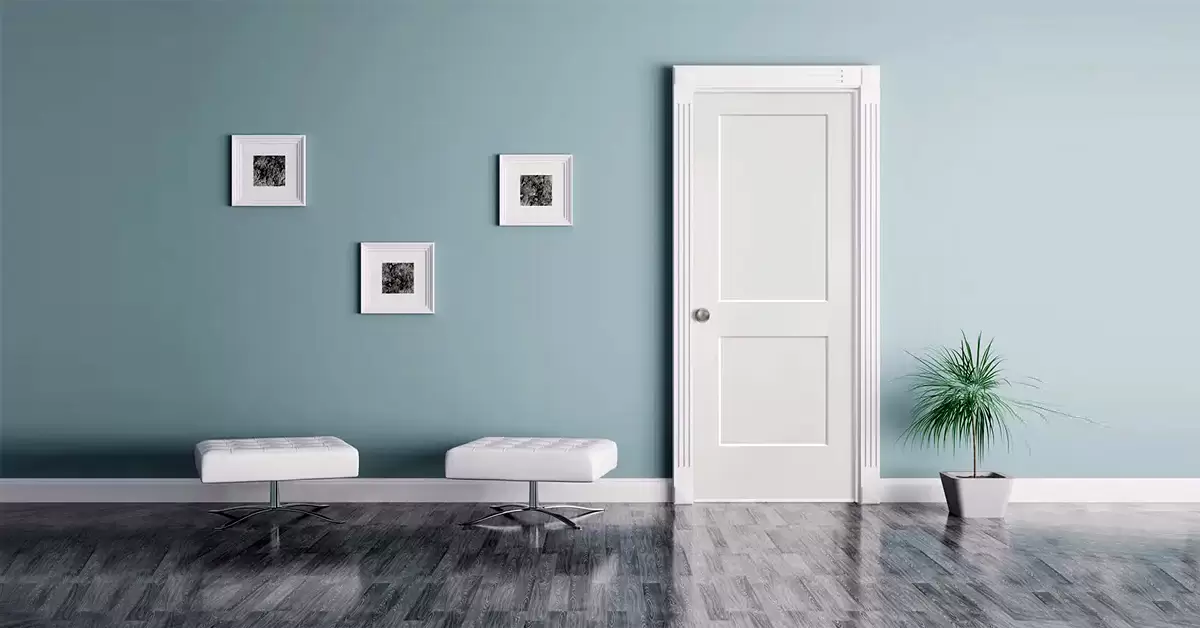
- Constructed from solid wood or veneered MDF boards fitted into a framework of wood or manmade materials.
- Come with different numbers of rectangular panels – two, four, or six most common.
- Intricate details like carved grooves, applied moldings, and inset glass are possible.
- Pros: Classically elegant styling, sound privacy, wood warmth.
- Cons: Prone to splitting over time, heavy.
- Best for: Bedrooms, offices, dining rooms.
3. Steel Doors:
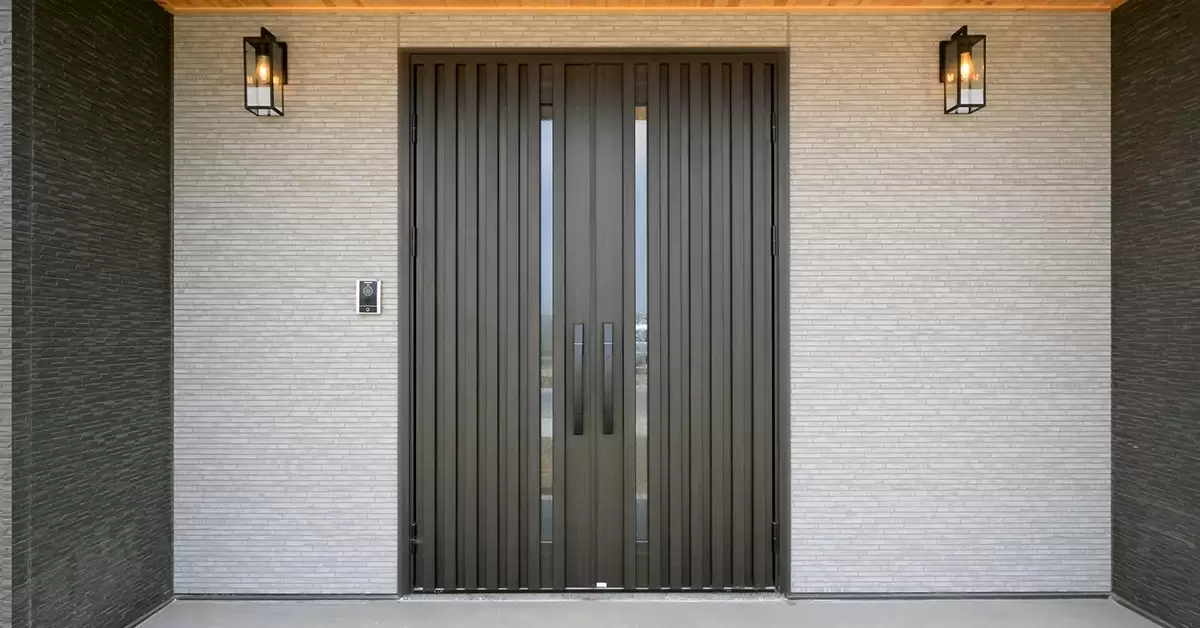
- Outer steel skins deliver strength, durability, and security.
- Foam or vinyl layered cores add insulation against sound/temperature transfer.
- Painted, stained, or galvanized finishes mimic wood texture. Pre-hung options simplify installation.
- Pros: Highly durable, resistant material protects against elements and forced entry.
- Cons: Impersonal look lacks the charm of wood doors
4. PVC Doors:
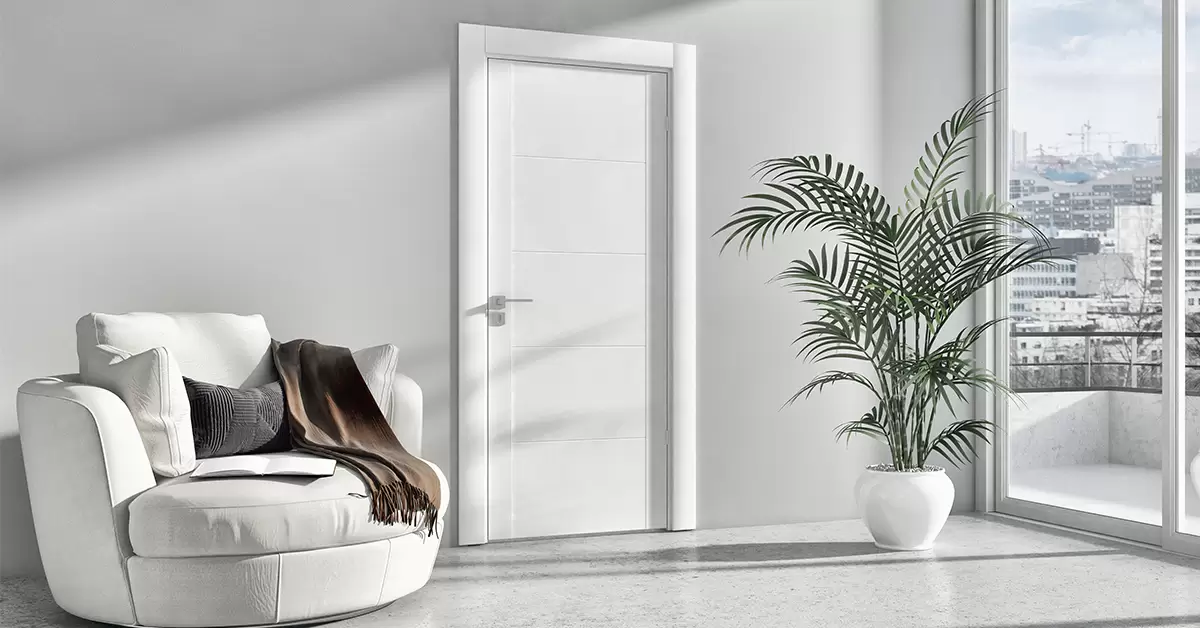
- Hollow or foam-filled polyvinyl chloride (PVC) plastic door construction resists moisture.
- Smooth, grained texture available in shades from white beige to faux wood brown.
- Suited for damp areas like pool houses or patios.
- Pros: Waterproof material, minor scratches buff out.
- Cons: Can warp or discolor over time from sun exposure.
- Best for: High moisture areas.
5. Timber Doors:
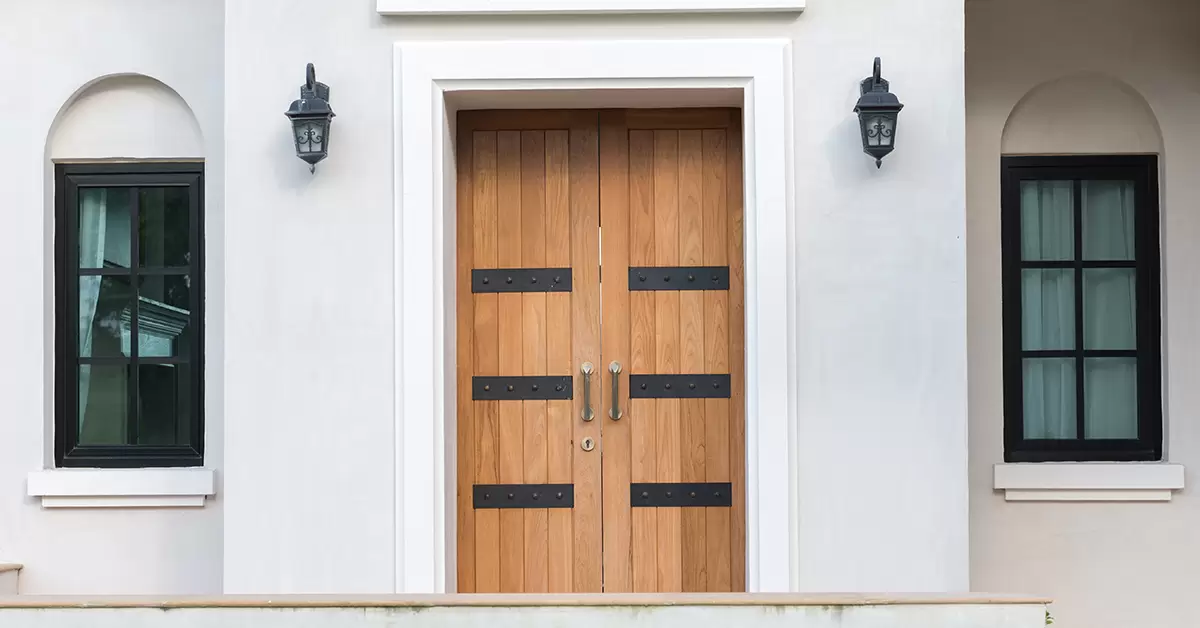
- Crafted from natural solid wood planks, usually oak, maple, cherry, or pine.
- Include details like wood surrounds, carved panels, and glass cutouts.
- Find usage as imposing front entryway doors or simple backyard shed doors.
- Pros: Beautiful genuine wood grains/textures, excellent insulator.
- Cons: Shrinkage/expansion, regular refinishing needed.
- Best for: Making distinctive design statements at home entries.
6. French Doors:
- Paired doors with full-length glass panes surrounded by wooden stiles and rails.
- Made of various wood types – pine, oak, fir, fiberglass.
- Open onto patios/porches to blur the indoor-outdoor barrier.
- Pros: Infuse rooms with graceful old-world flair.
- Cons: Not very weatherproof or secure on own.
- Best for: Bedrooms, studies, and living rooms.
7. Flush Doors:
- Flat, smooth surface with invisible joint lines between frame and panels.
- Hollow core versions are economical; solid core models offer sound dampening.
- Take paints/finishes well to integrate with any decor.
- Pros: Versatile aesthetic, durable construct.
- Cons: Lacks depth and detailing.
- Best for: Budget projects.
8. Sliding Doors:
- Panels slide along a suspended overhead track system.
- Materials like metal, glass, wood, or vinyl.
- Bypass configuration is convenient for tight spaces.
- Pros: Space saver that creates open concepts.
- Cons: Can easily come off the ragged track.
- Best for: Patio access, room dividers.
9. Aluminum Doors:
- Light metal door made using aluminum sheets/extrusions.
- Available insulated or uninsulated.
- Often used in commercial buildings, it is now seen in modern homes.
- Pros: Strong yet lightweight doors with slim profiles.
- Cons: Conducts heat/cold easily.
- Best for: Sleek modern or industrial-style homes.
10. Collapsible Doors:
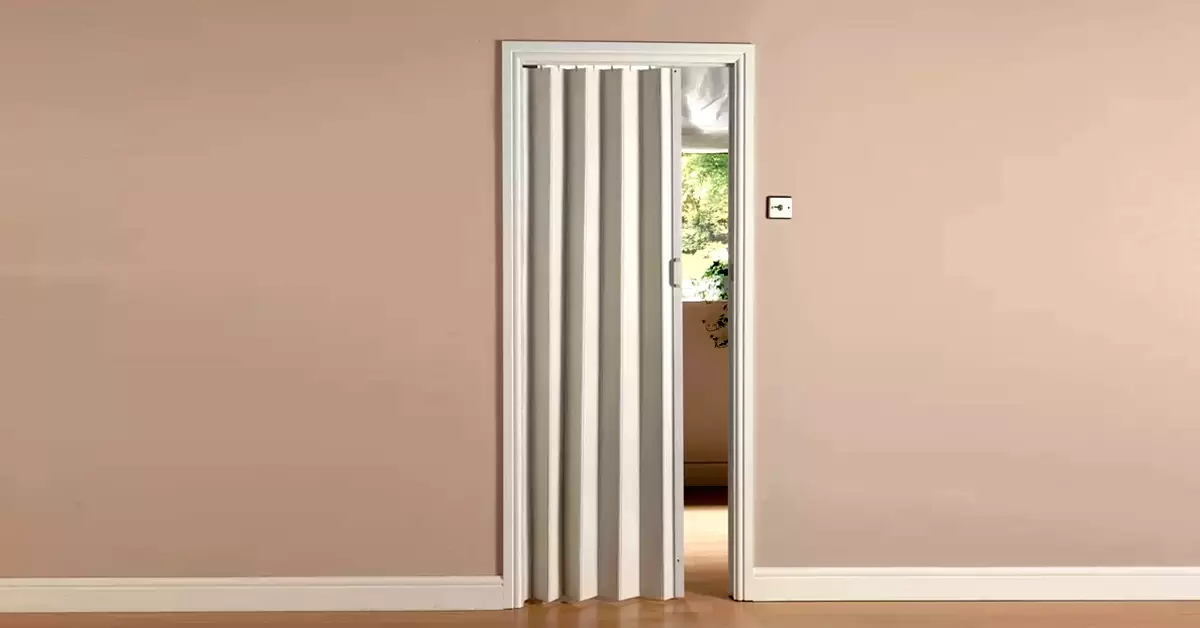
- Accordion-style folding door panels collapse snugly into each other.
- Made of materials like wood, plastic, or insulated metal.
- Mount on rollers inside upper and lower tracks.
- Pros: Disappear neatly when fully retracted open.
- Cons: Not very soundproof. Dust-catching tracks.
- Best for: Large openings needing temporary division.
11. Dutch Doors:
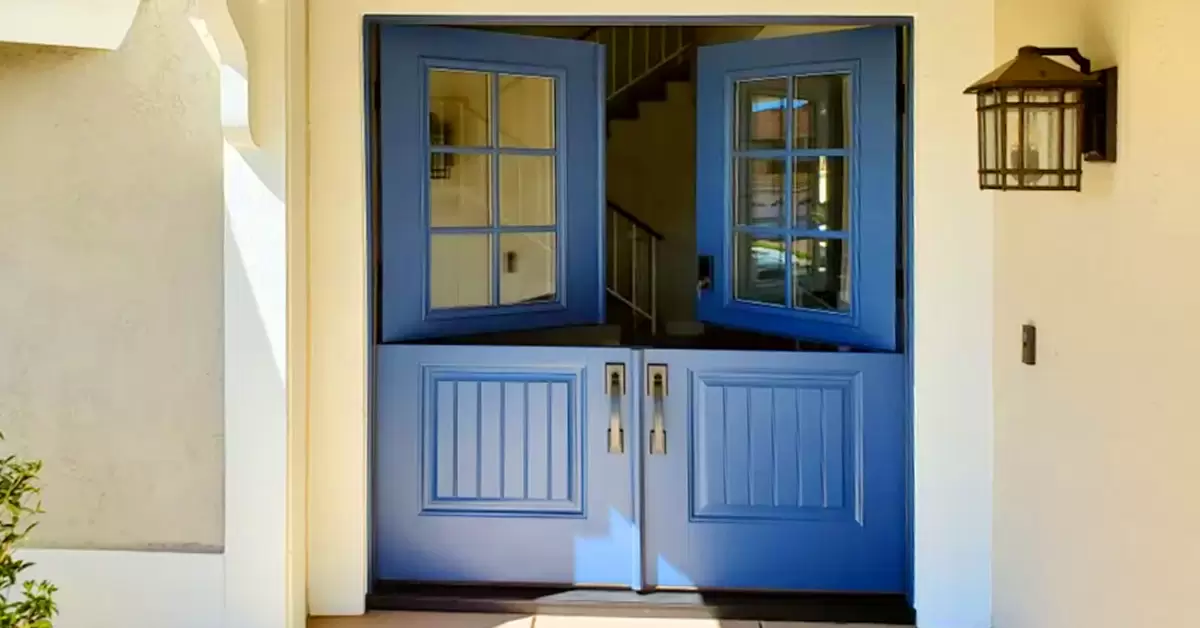
- Doors bisected horizontally into upper and lower levels.
- Allow the top half to stay shut while the bottom is open.
- Made of woods like oak, cherry, pine, or mahogany.
- Pros: Provide privacy and security with the ability to ventilate rooms.
- Cons: Costly, not space efficient, limited usage.
12. Battened Doors:
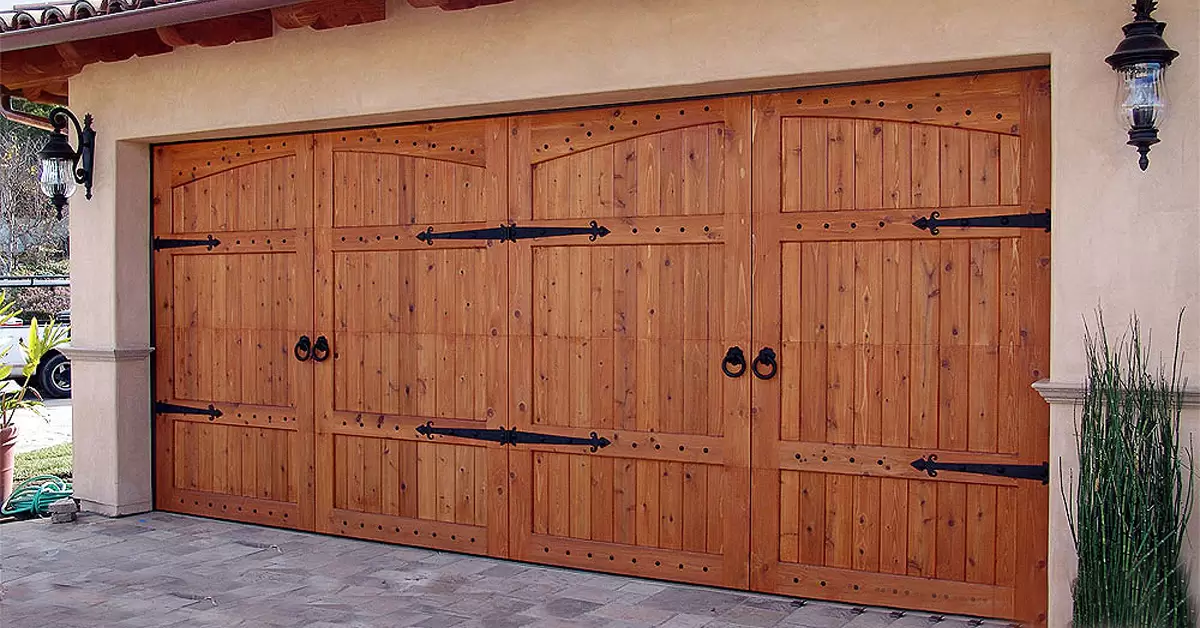
- Constructed from vertical wooden planks with horizontal battens/ledges across them.
- Often barn-style doors that slide along an exterior wall guide.
- Pros: Rustic, informal aesthetic.
- Cons: Won’t stop dirt, noise, or pests.
- Best for: Casual outdoor secondary entrances.
13. Exterior Doors:
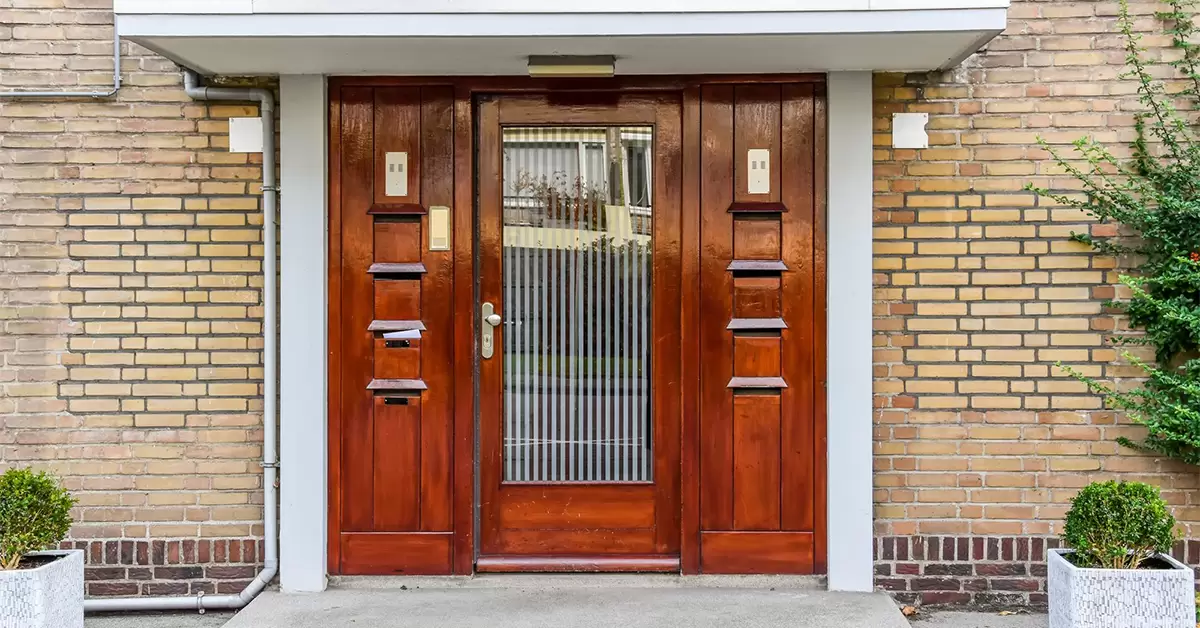
- Outermost barrier doors are used to access home entryways.
- Made of solid wood, steel, fiberglass, or engineered composites.
- Must resist weather, impacts, forced entry.
- Pros: Critical protective barrier, design focal point.
- Cons: Expensive, subject to lots of wear.
- Best for: Defining and securing home boundaries.
14. Fiberglass Doors:
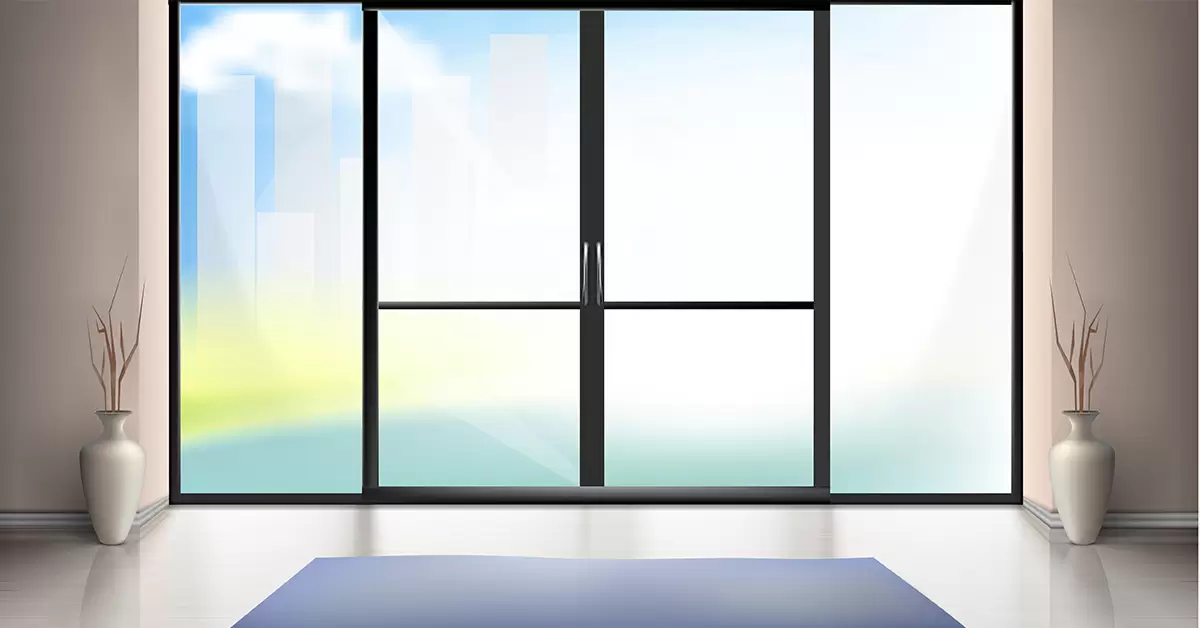
- Molded composite of fiberglass strands mixed with resins.
- Simulate wood grain texture while withstanding moisture/swings.
- Often used as entry doors instead of normal wood.
- Pros: Immune to warping, rotting, or cracking.
- Cons: Synthetic appearance lacks wood charm.
- Best for: Low maintenance but attractively styled exterior access.
15. Barn Doors:
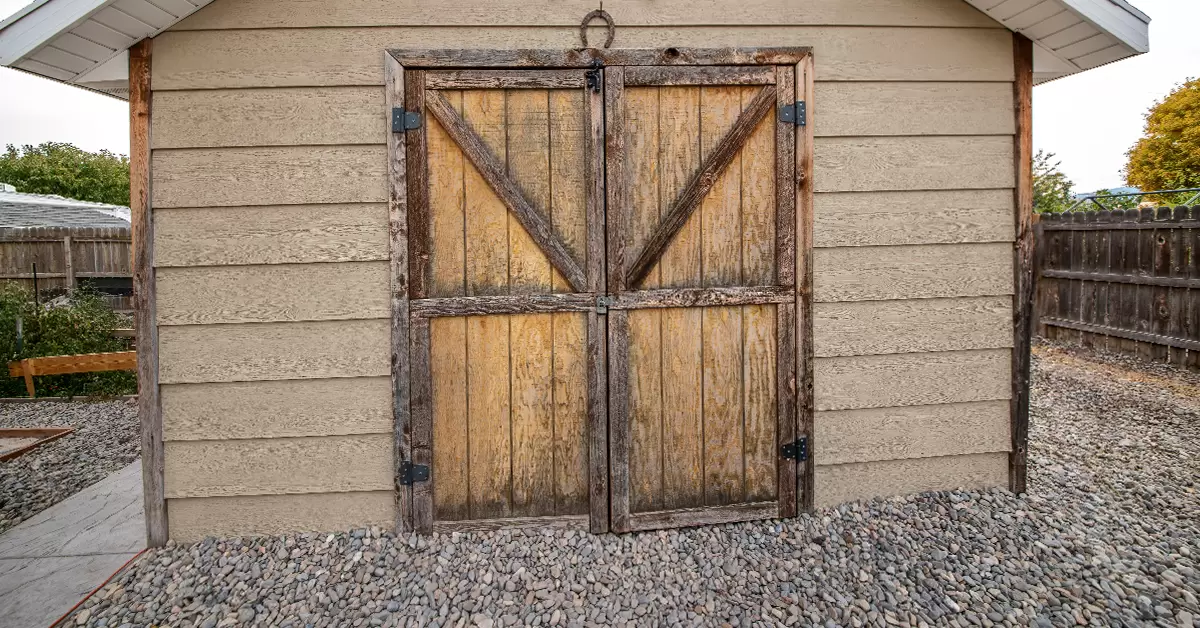
- Evokes casual farmhouse flair whether interior or exterior use.
- Made of unfinished solid boards mounted on large sliding mechanisms.
- Creates open free-flowing room plans.
- Pros: Saves space with no formal swinging clearance needed.
- Cons: Won’t block light or noise well. Industrial track protrusions.
- Best for: Rustic/modern interiors.
16. Bypass Doors
- Multiple door panels on rollers traverse parallel tracks.
- Suspended from overhead track and guided at floor level.
- Allow entire sections to neatly slide open without blocking space.
- Pros: Customizable widths to perfectly fit wall expanses.
- Cons: installation complexity, higher cost.
- Best for: Huge openings you want completely unobstructed.
17. Pivot Doors
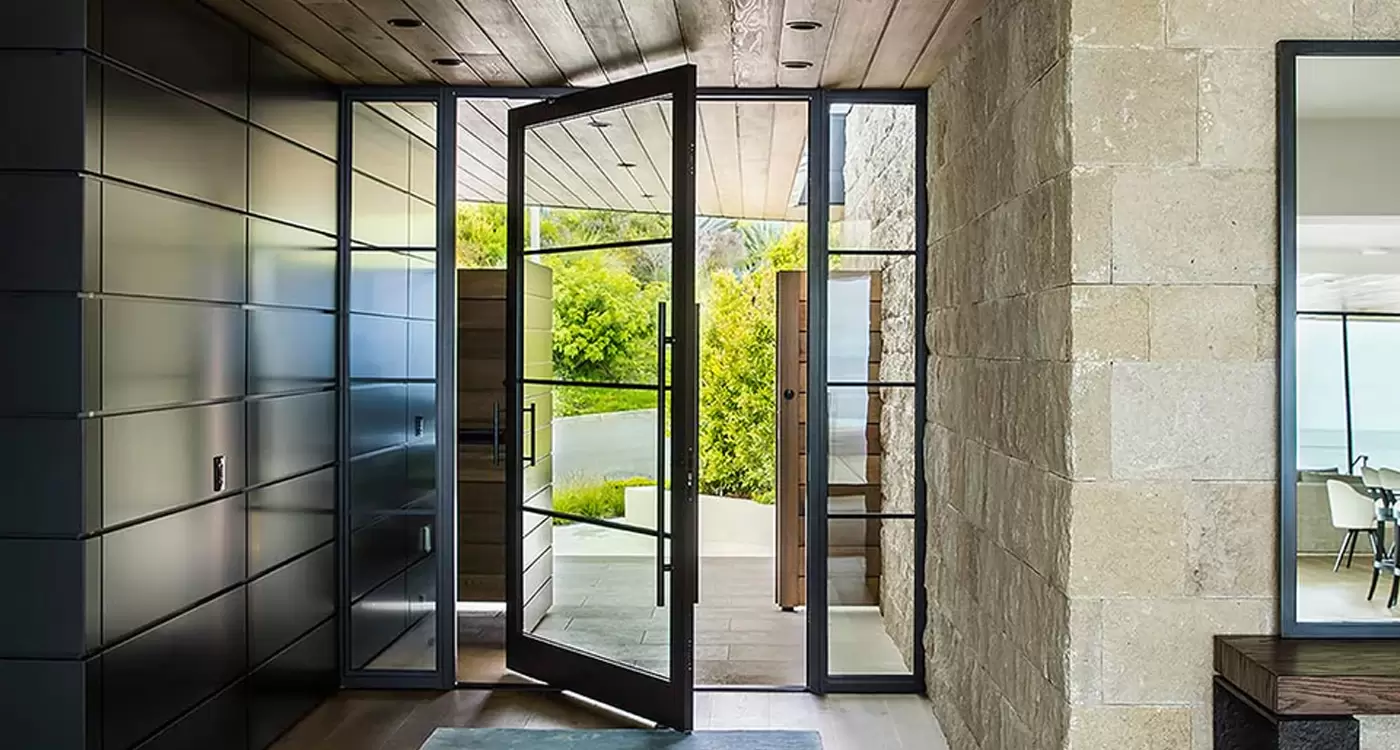
- Robust door attached on central pivot hardware at top and bottom.
- Swings smoothly open in either direction.
- Suitable as impressive architectural focal points.
- Pros: Seamlessly rounded corner transitions, 3-60” width range.
- Cons: Requires accurate framing, special hardware.
- Best for: Making bold statements.
18. Double Doors
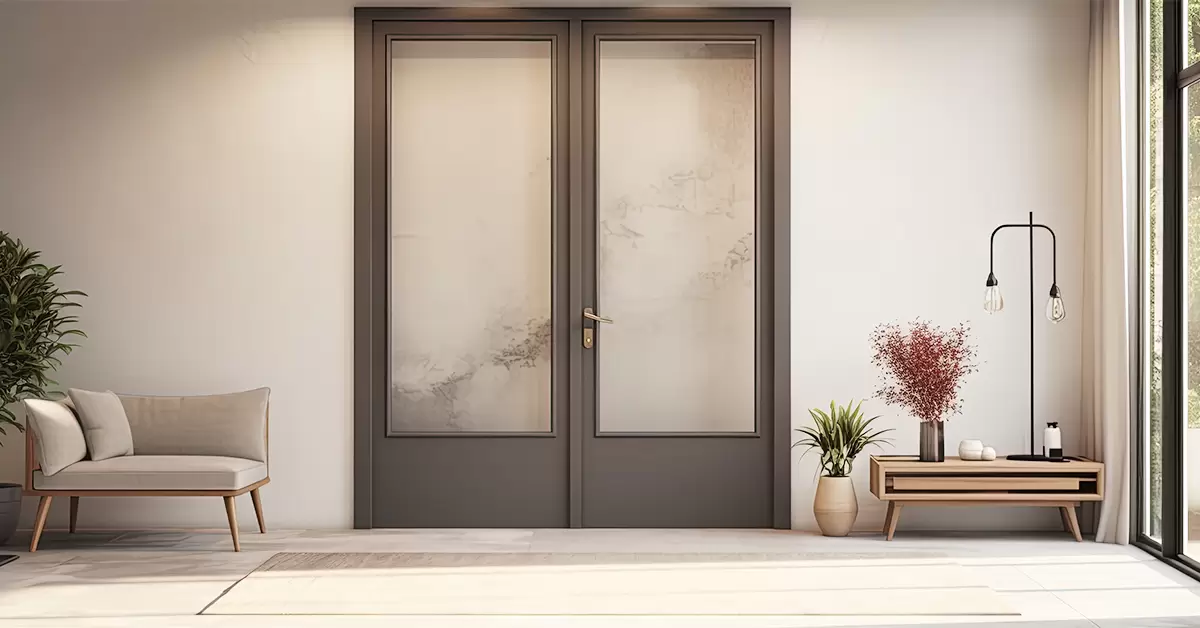
- Paired identical doors mounted in tandem on the same wall opening.
- Popular as fancy front entrances that make dramatic first impressions
- Pros: Luxurious grand entryway marker, symmetrically balanced.
- Cons: Require double stopping mechanisms, cost.
- Best for: Creating a palatial aesthetic for homes.
19. Composite Doors
- Door skins are made from durable weather-proof polymer compounds.
- Encased around core insulation materials composed of wood byproducts or foam.
- Offer security, sound dampening, thermal efficiency.
- Pros: Virtually maintenance-free, easily cleaned, long lifespan.
- Cons: Higher upfront cost.
- Best for: Exterior accesses demanding ultimate performance.
Conclusion
With numerous varieties to pick from – glass, steel, timber, aluminum, etc. – entry and interior doors represent key decorative elements that define rooms. Carefully selecting door styles and materials based on intended location, privacy needs, budget, and decor allows homeowners to creatively elevate living spaces. Investing in quality crafted, well-fitted doors suited for high traffic usage ensures long-term functionality along with a unique personality reflected in every home.

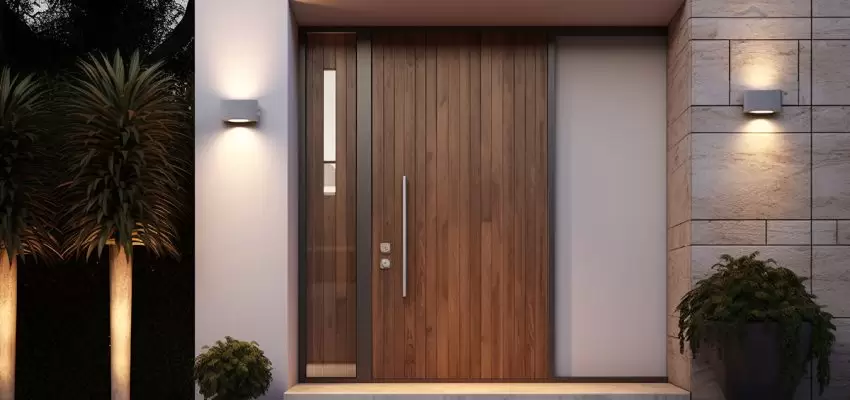
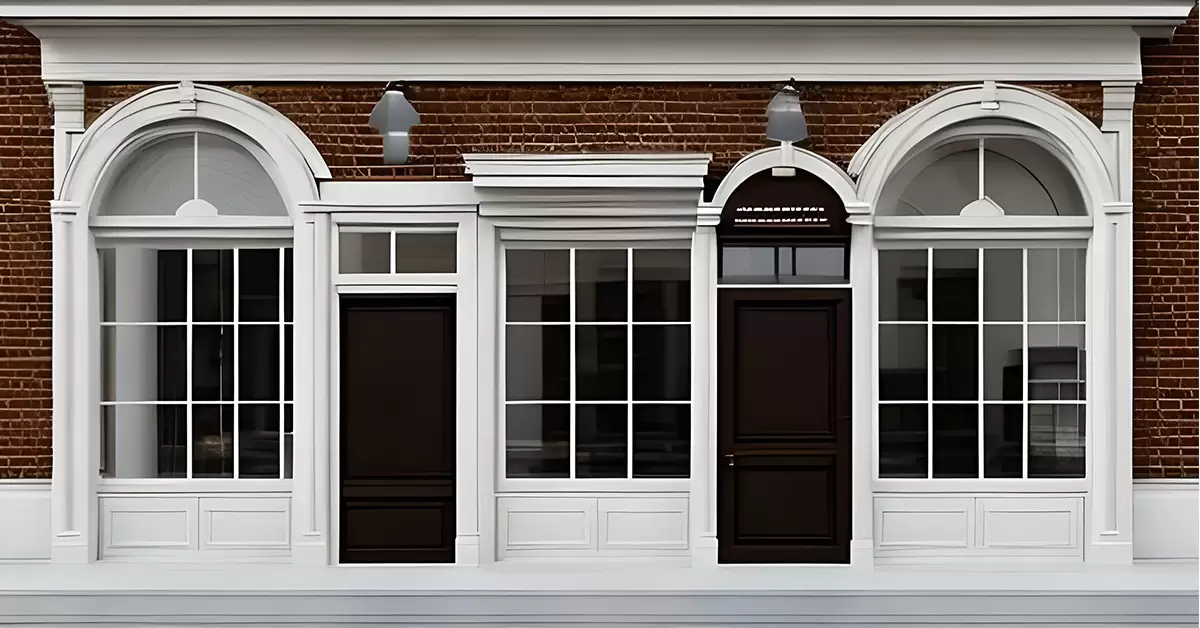
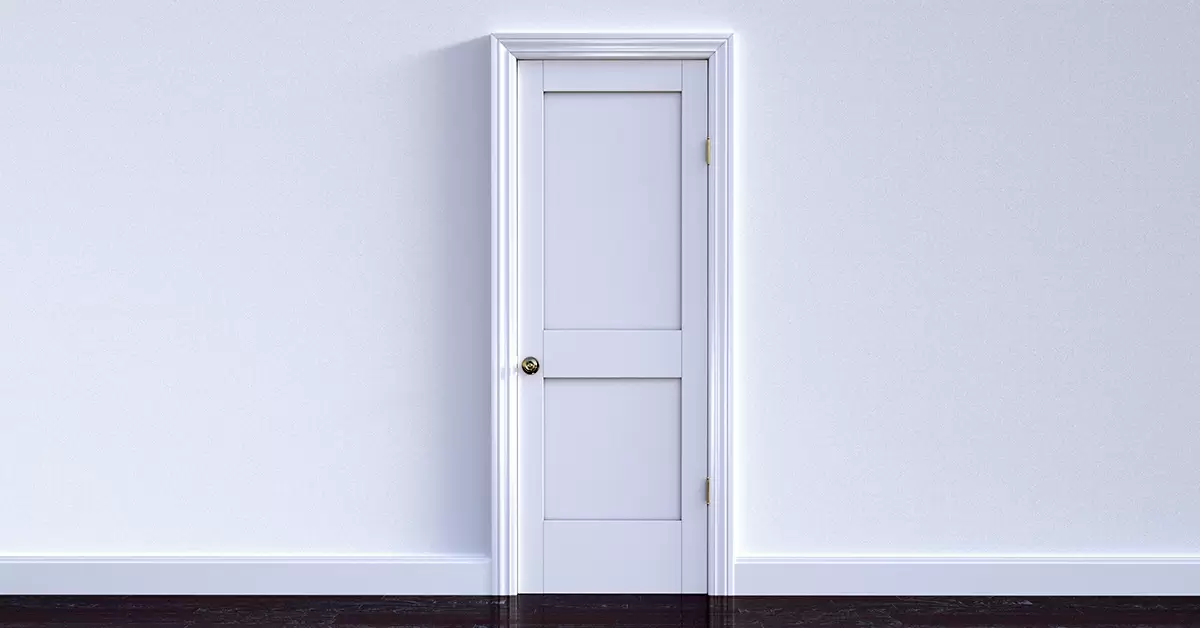
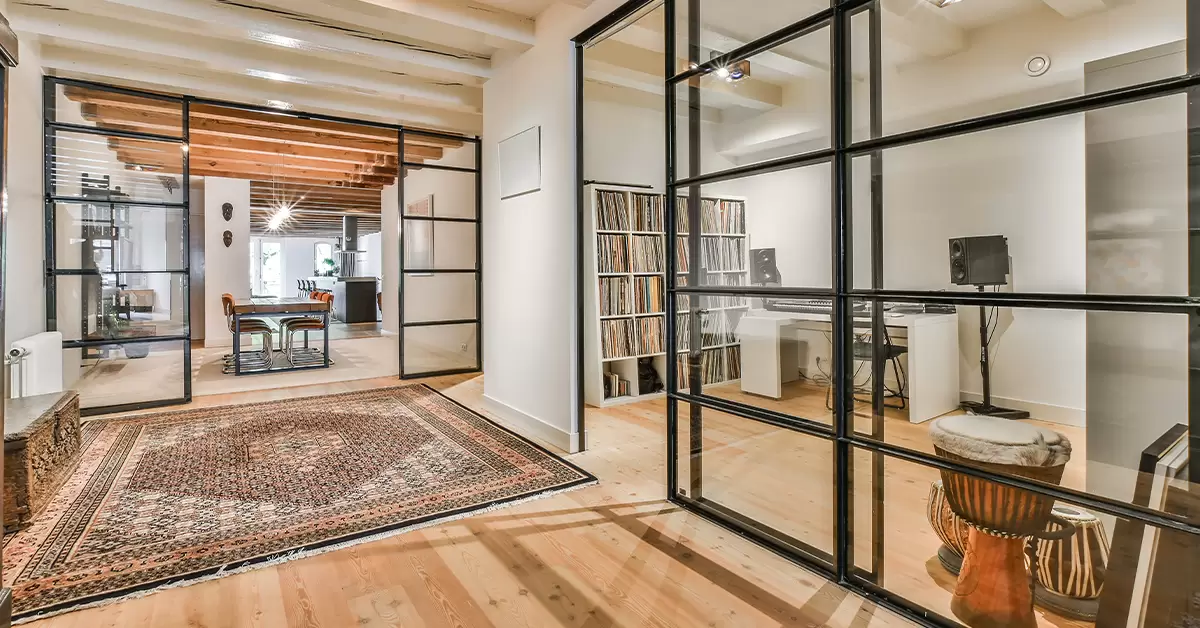
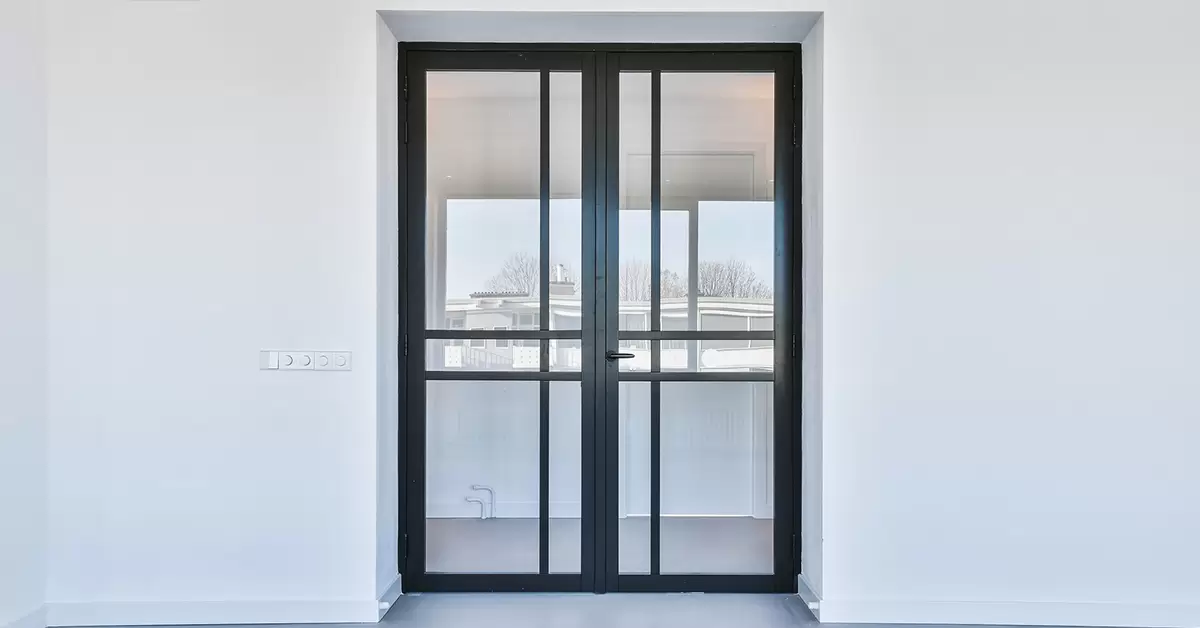
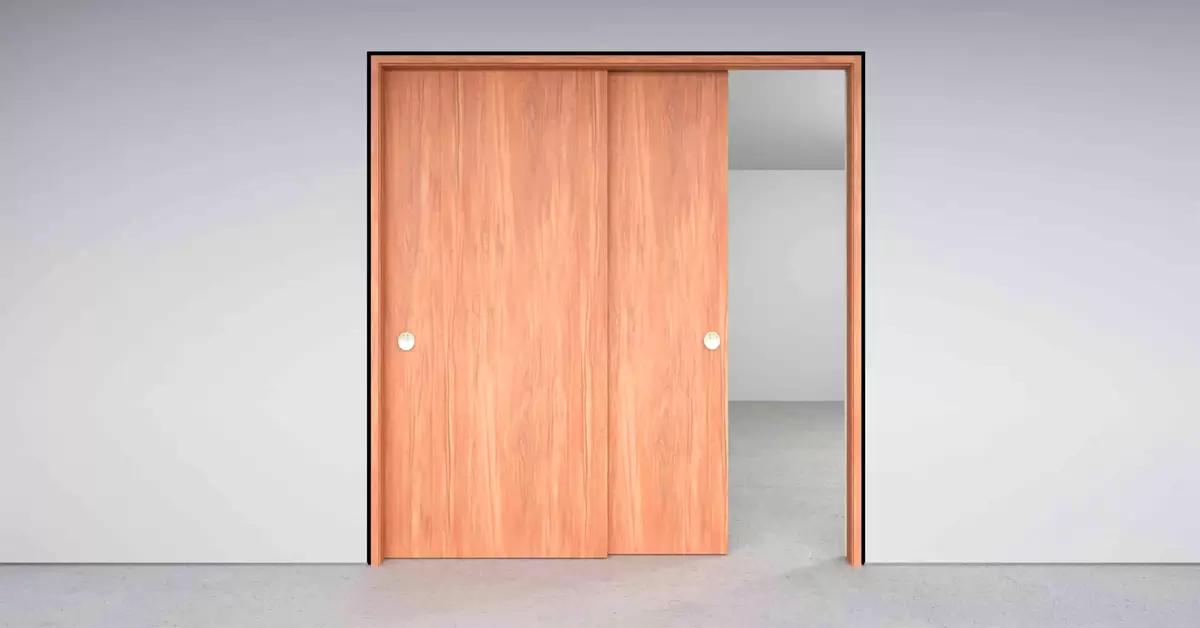
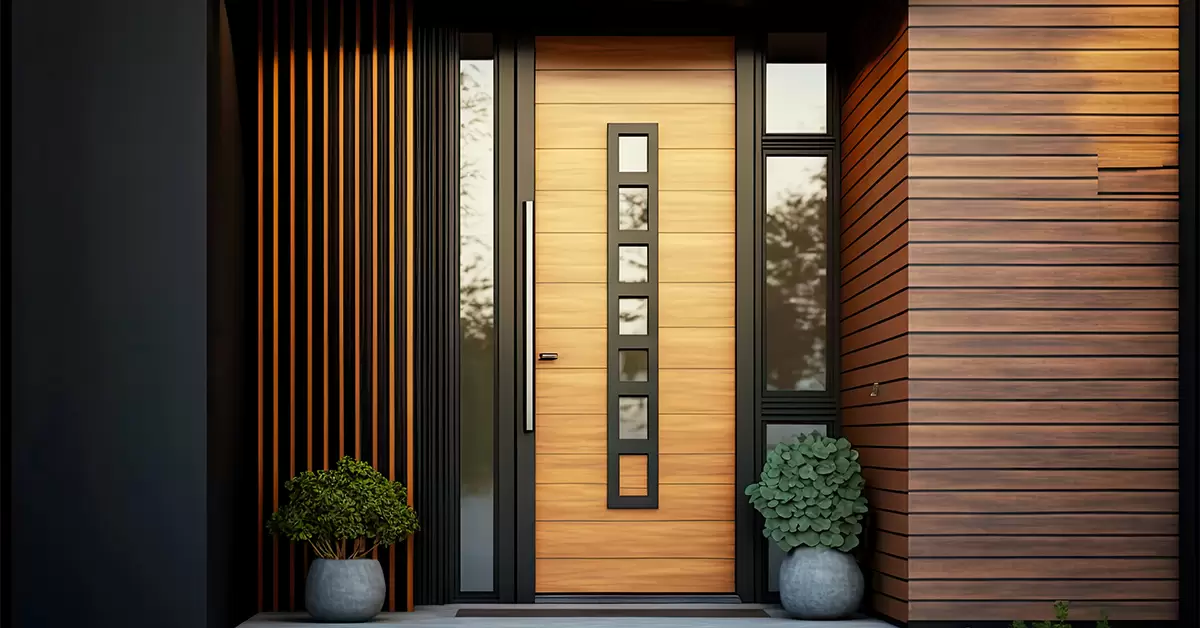
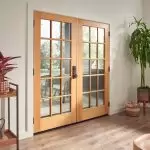
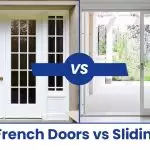
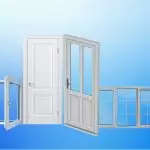
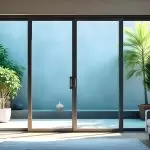

















Post A Comment